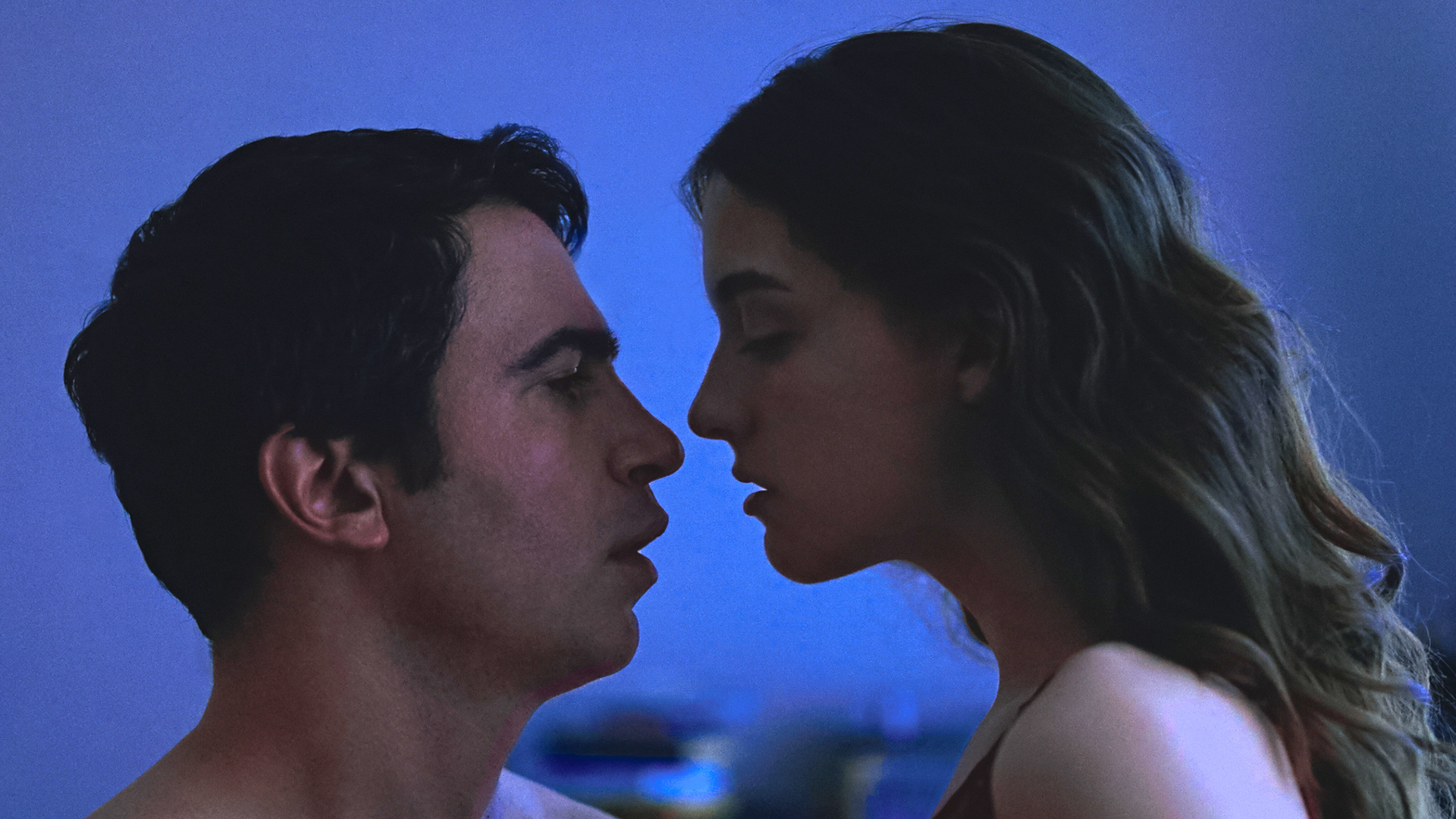In “Blame,” the startlingly confident debut film by precocious 22-year-old Quinn Shephard, the 2017 Tribeca Film Festival receives its true breakout of the year, while also serving as a brutal reminder as to why you couldn’t pay me to be a teenager again.
Abigail (Shephard) is returning to school after a year away following a very public breakdown. An easy target for bullies, especially mean girl Melissa (Nadia Alexander), Abigail finds reprieve after she’s cast in the leading role in the school production of Arthur Miller’s “The Crucible,” a feeling compounded when she catches the attention of her teacher, empathetic Jeremy (Chris Messina). As the two grow closer, Melissa and her friends scheme as to how to pull the rug out from under Abigail’s feet, trying to catch a glimpse of the emotional instability that led to her nickname of Sybil.

Following in the footsteps and aesthetics of Leah Meyerhoff’s underseen “I Believe In Unicorns” and Carol Morley’s “The Falling” in its approach to female sexuality and high-school adolescence, “Blame” hits some bumpy spots on the road to its third act, but ultimately is a powerful and self-assured first feature. Written, directed, produced and edited by, and starring (quintuple threat) Shephard, “Blame” makes a tremendous case for her obvious talent with a film that is actively able to engage with the teenage mindset in a manner that is authentic (scarily so) while also putting forth a wise-beyond-its-years maturity. While it might brush against cliches (especially the student/teacher relationship), Shephard is able to avoid becoming victim to those familiar chestnuts by providing her protagonist, antagonist and supporting players moments of genuine and characterizing clarity.
This is especially true with the characters Ellie (Tessa Albertson) and Sophie (Sarah Mezzanotte), childhood best friends who shine in the periphery of the film’s main storyline. Sophie is swept up by mean girl Melissa’s hunt for drama, while Ellie takes a step back, unable to handle Melissa and the effect she has on her friend. Performed beautifully by Albertson and Mezzanotte, the two give nuanced performances of characters who are learning from their mistakes, especially Ellie as she forges her own path away from Melissa’s brand of high-school cruelty. It’s in these scenes where Shephard’s writing is the strongest, feeling the most true to life. By picking up on the nuances of being a teenage girl and the innate insecurity which follows, Shephard captures what filmmakers 20 years older have a tendency to miss.
It’s Alexander’s turn as the perpetually scowling and stomping Melissa that runs away with the film, even if her shoehorned reveal in the third act feels a few scenes too late. At the start of the film, she is the pure embodiment of just how horrid teenage girls can be to one another, so instantly heinous in her attitude that she’s repellent. As the film progresses, while we we don’t necessarily feel compassion for her immediately, we do begin to sense that her attitude, in-your-face sexuality and need to be found the most attractive girl in school is as much a role as Abigail’s high collars and cross that she takes on to mold herself into the besieged heroine of “The Crucible.”
READ MORE: 2017 Tribeca Film Festival Preview: 20 Must-See Films To Watch
Her brief moments of tenderness with Sophie, the dealings with her abrasive guardian and the insecurity that she wears on her sleeve allow her to be more than just a one-note villain. Instead, she’s an intriguing counterpart to Abigail’s put-upon precautions; both are trying to be older than they are in manners that undercut their efforts. Shephard is an elegant presence, imbuing Abigail with just the right amount of fragility and lanky oddness to fill in the gaps of her character development. Her loneliness is apparent enough that you can understand why she’d latch so thoroughly onto her teacher’s doting attention, even if we as the audience are squirming during their first shared monologue due to the ick factor. If there’s something worth harping on in this film, it’s that it doesn’t go far enough in condemning Jeremy’s gross behavior.
It helps that the film is gorgeous to look at, with cinematographer Aaron Kovalchik giving everything from the school’s auditorium, a swimming pool in the middle of a downpour, and a similarly rain-soaked talk in Jeremy’s car a hazily dreamlike atmosphere. It allows for the moments these characters experience to feel larger than life, just as they feel to the teenagers being played.
It cannot, however, be stated enough just how much of the success lies on the young shoulders of Shephard, who shot the film when she was just 20 years old. While the pacing of the third act could’ve been better laid out and the aforementioned reveal a little clunky, “Blame” on the whole is a remarkably successful first feature film for such a fresh talent. Regardless of her youth, it’s an insightful film that delivers an honest portrait of four girls trying to navigate high school, expectations, friendships and their oftentimes heartbreaking need to be desired and loved. [B+]
Click here for our complete coverage of the 2017 Tribeca Film Festival





